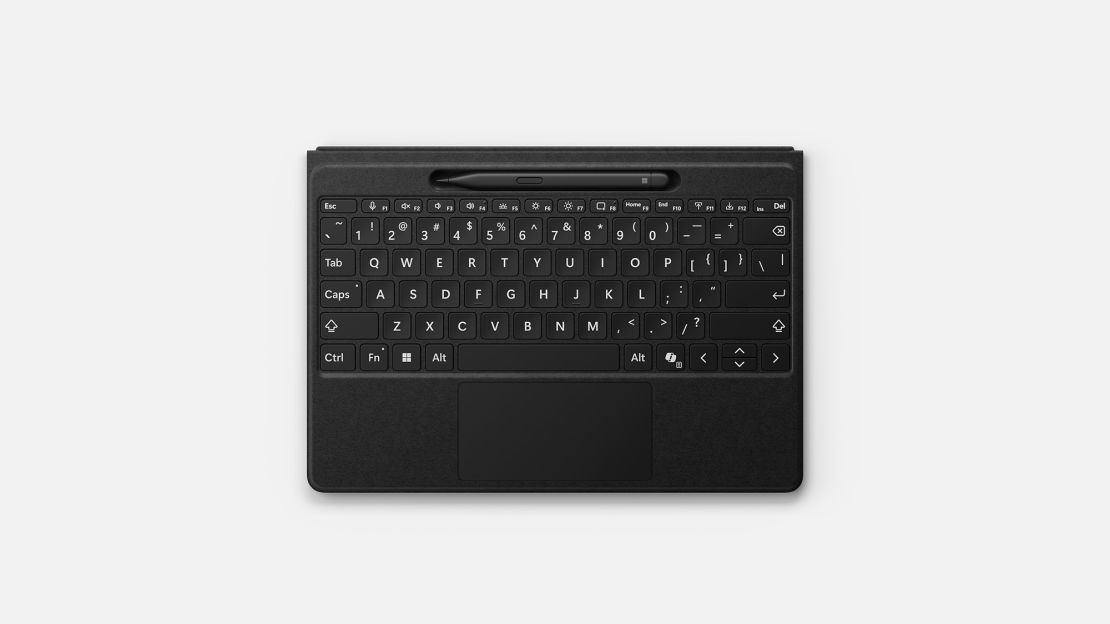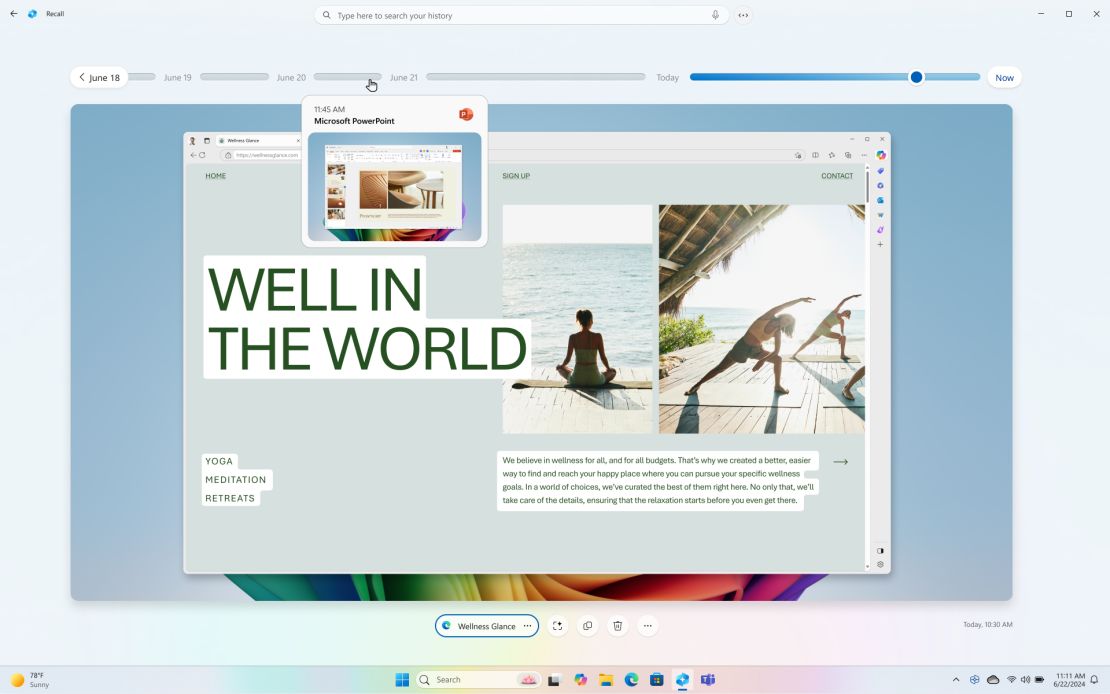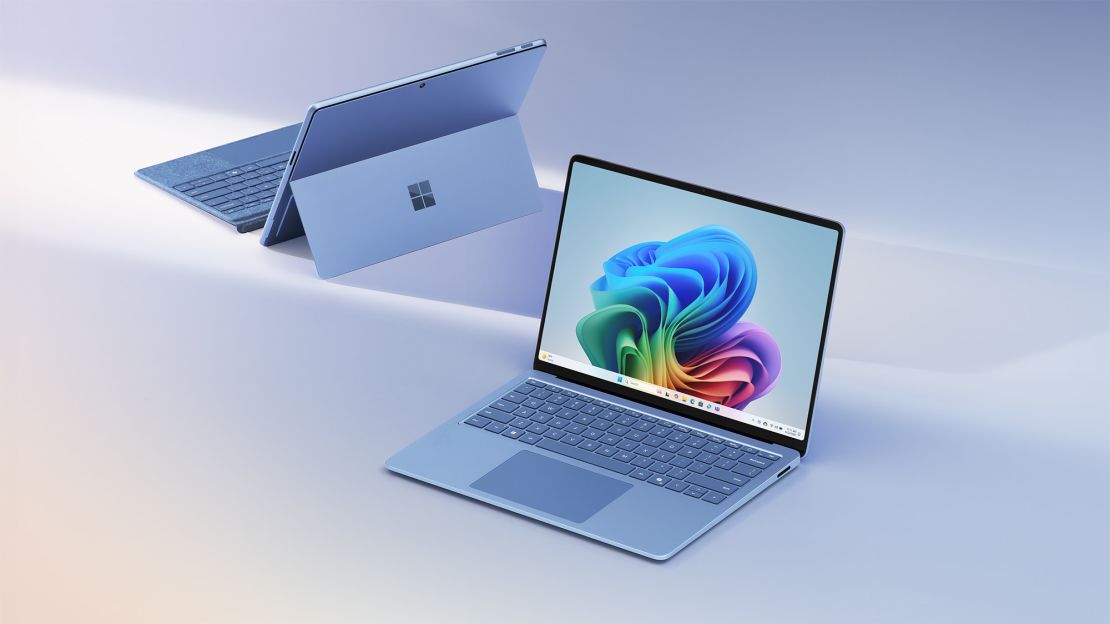The ongoing race for the title of best laptop just got more/ interesting, as Microsoft just dropped the new 2024 versions of its Surface Pro and Surface Laptop, its flagship contenders to beat the MacBook Air. This new generation of Windows 11 devices aims to catch up with the Apple silicon-powered laptops that we love so dearly with two tricks: new Arm-based processors and a lot of AI-based features that aim to revolutionize the Windows world.
Oh, and for those who expected a “Surface Pro 10” and a “Surface Laptop 6,” you’re not alone. We’re just as surprised that Microsoft ditched the numerals in its Surface product line. Just don’t expect a redesign, as these devices look very familiar. Microsoft also claims that these new devices will outspeed the 15-inch MacBook Air M3 by up to 58% while lasting up to 20% longer on a single charge.
Let’s break down this bold strategy together because while preorders are open now, with release dates around June 18, there’s a lot of hype to sift through. Microsoft tried to make Windows on Arm happen before, so veteran users know to measure at least twice before buying once.
Microsoft’s latest flagship laptop is rated for enough battery life to get you through the longest workdays, with a serious performance boost over the Surface Laptop 5.
Massive speed gains and a quad-HD webcam make Microsoft’s detachable 2-in-1 tablet a force to be reckoned with in 2024.
The new Surface Laptop looks to last all day and nearly all night
Microsoft boasts that the new Surface Laptop can play up to 22 hours of local video on a single charge, which is reason enough to have us very intrigued. Apple claims up to 18 hours of battery life for the same task, though each company measures these things at its own rates. As for speed, Microsoft compared this Surface Laptop against the Surface Laptop 5, noting a gigantic 86% jump in performance.

Microsoft’s design updates to the Surface Laptop, however, err toward minimalism, thinning down its bezels and making its corners a little more rounded and less angular. The new Surface Laptop (2024) will be sold in 13.8- and 15-inch sizes, available in Sapphire blue, a champagne-like hue Microsoft calls Dune, Platinum silver and Black. The 13.8-inch model starts at $1,000 (with the Snapdragon X Plus, the X Elite’s little sibling) while the 15-inch model will run you at least $1,300.
As for its display, Microsoft’s baking in both regular HDR and the Dolby Vision IQ standard for color and contrast — and a touchscreen, another feature Apple isn’t offering at this point in time.
Microsoft is also going to enforce spec standards for Copilot+ PCs, which need SSD storage for speedy data transfers and at least 16GB of RAM, plus a neural processing unit (NPU). The new Surface Laptop can be customized with up to 32GB of memory, and storage options range from 256GB to 1TB. Expect important apps such as Spotify, Chrome and Photoshop to run natively while others operate in Microsoft’s Prism emulator.
Meet the new Surface Pro, now with OLED
One of the biggest claims Microsoft made came with the new Microsoft Surface Pro (2024), which the company declared is up to 90% faster than the Surface Pro 9. This new Surface Pro tablet will run on the Snapdragon X Elite and Snapdragon X Plus chips, with the former being the more powerful option. The Snapdragon X Plus-based Surface Pro starts at $1,000 and packs a traditional LCD display while the Elite-based Surface Pro begins at $1,500 and offers a high-contrast OLED panel. And that’s all before a keyboard.

Speaking of which, Microsoft also announced a new $350 Surface Pro Flex keyboard, with improved backlighting and a touchpad that provides haptic feedback (just like the new iPad Pro Magic Keyboard). You can also get it with a “bold” set of keycaps which should make the lettering more easily legible — an accessibility boon. Microsoft also showed off imagery of this keyboard used in a detached mode, which makes us curious about its comfort levels.

The upgrades are even coming in the smaller specs, as the new Surface Pro upgrades from a 1080p webcam to a new Quad HD camera. Just like the new Surface Laptop, the Surface Pro supports the still-new Wi-Fi 7 standard for improved connectivity. It also can be customized for 5G cellular data, which Apple still doesn’t offer in its MacBooks. If you’re the kind who likes to take video with their tablets, you might be happy to hear that the new Surface Pro records 4K video with its rear camera.
Microsoft is a little more conservative about the new Surface Pro’s battery life, only claiming 14 hours of endurance on a single charge. All in all, though, the new Surface Pro looks like a surefire challenger for the best tablet title.
What will Microsoft’s Copilot+ PCs do for you?

In its presentation, Microsoft’s execs showed off how the new integrations with the Copilot AI companion will allow users to improve image resolution and create narrative text for photos. Heck, Copilot will even work with Minecraft.
The most interesting feature showcased was Recall, a trick to help you figure out what you were doing in the past so you don’t need to take notes to remind yourself in the future. The demo showed off how you can find stuff you were looking at on Pinterest weeks after the fact. Naturally, Recall will be baked into Microsoft’s own applications such as Edge and Powerpoint, and even work with third-party apps such as Discord.
The takeaway

As always, we look forward to our in-depth review process to see how much of the hype can be seen in reality, but we have to admit that Microsoft’s sketched an interesting future for Windows 11-based devices. The difference between announcement and review can always be huge, and Microsoft’s bold performance gains should be taken with a dash of salt — the previous Surface devices were a little long in the tooth and in need of a refresher.
Microsoft won’t be the only one offering Copilot+ PCs, as all the familiar faces that vie for the title of best Windows laptop including Dell, Lenovo, HP, Asus and Acer are announcing their versions of this new world order. The assembled PC makers joining in this fellowship look a lot stronger now than back when Windows RT with Arm chips flopped, so there’s good reason to be optimistic.






















